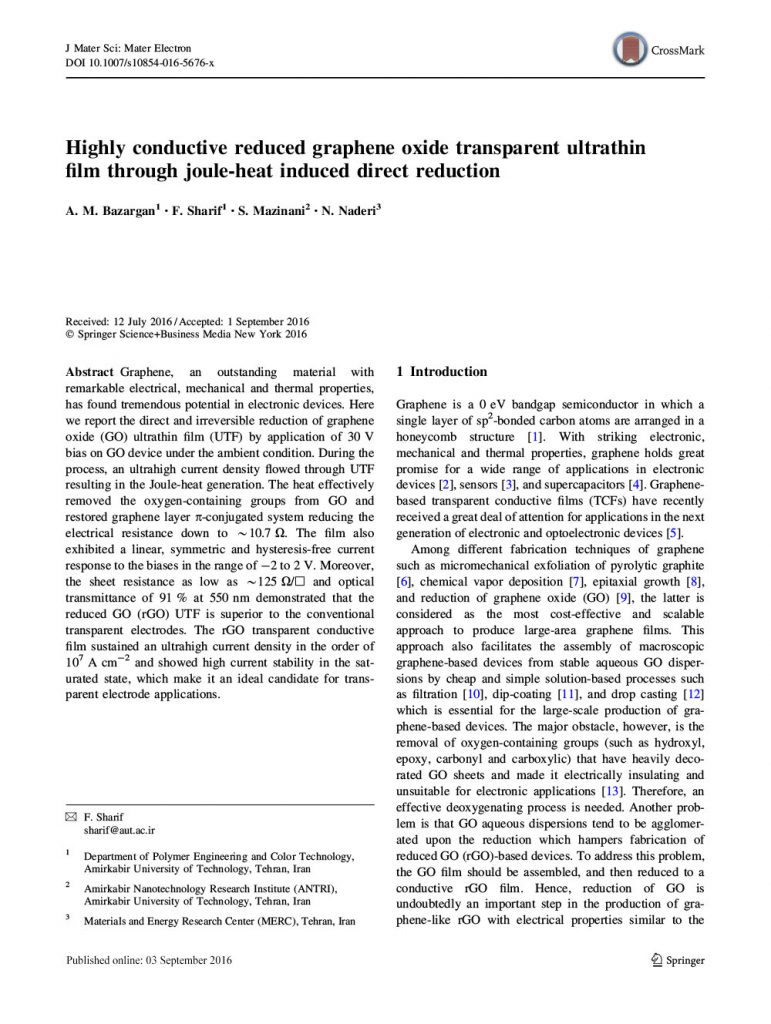Abstract
Graphene, an outstanding material with remarkable electrical, mechanical and thermal properties, has found tremendous potential in electronic devices. Here we report the direct and irreversible reduction of graphene oxide (GO) ultrathin film (UTF) by application of 30 V bias on GO device under the ambient condition. During the process, an ultrahigh current density flowed through UTF resulting in the Joule-heat generation. The heat effectively removed the oxygen-containing groups from GO and restored graphene layer π-conjugated system reducing the electrical resistance down to ~10.7 Ω. The film also exhibited a linear, symmetric and hysteresis-free current response to the biases in the range of −2 to 2 V. Moreover, the sheet resistance as low as ~125 Ω/□ and optical transmittance of 91 % at 550 nm demonstrated that the reduced GO (rGO) UTF is superior to the conventional transparent electrodes. The rGO transparent conductive film sustained an ultrahigh current density in the order of 107 A cm−2and showed high current stability in the saturated state, which make it an ideal candidate for transparent electrode applications.

